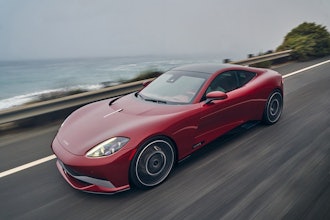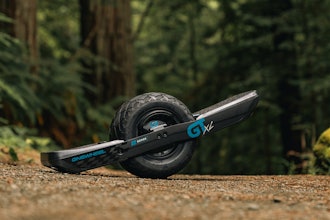
LAUSANNE, Switzerland - Can-Am is changing the utility and recreational side-by-side landscape with the next generation of its Can-Am Traxter model. For 2026, this workhorse receives a ground-up overhaul.
Julie Tourville, Director, Global Marketing, Can-Am Off-Road at BRP, said, "At Can-Am, we know that the clock never stops for the farmers, ranchers and builders around the world. This new Traxter platform is built to prove it and match the unstoppable spirit of our hardworking customers. From managing farmland, to running a job site, or escaping to the backcountry, the new generation Traxter is all about bringing true value to our riders with practical and best-in-class features, industry-leading technology and reliable performance that they can count on to help them get the job done and beyond."
At the core of the next-generation Can-Am Traxter is an all-new HD11 999cc inline three-cylinder Rotax ACE engine, boasting 95 horsepower and 70 lb-ft of torque. The HD11 powerplant is paired with an all-new continuously variable transmission (CVT) and pDrive primary clutch that are designed to put power to the ground with precision and improve low-speed power delivery, while enhancing reliability. With three new selectable drive modes – Normal, Work and Sport – the engine optimizes performance for the toughest tasks, from towing heavy loads to conquering some of the most demanding terrains.
A new intake system promotes airflow to bolster engine performance, while an updated cooling system manages engine temperature and enhances heating and ventilation performance. The 2026 Traxter HD11 and MAX HD11 packages are equipped with an Open-4Lok front differential with ABS system to maximize traction in most conditions.
The new Traxter continues to lead the way with best-in-class payload, towing and cargo capacity, and it now comes equipped with a new, larger 45 L. fuel tank that enables longer days on the job or trail.
The 2026 Traxter features new suspension geometry with a 165 cm design and 50% larger arched double A-arms. The suspension and steering components are more robust and are assembled with double-bonded bushings, an industry first, for reduced maintenance and a quieter ride. The chassis has also been toughened up for the most demanding work and play scenarios, including improved ROPS. These changes not only increase toughness but also deliver sharper, more stable handling and advanced suspension performance even when the vehicle is loaded down with tools and gear. The Traxter features 30.5 cm of front and rear suspension travel with 35.6 cm of ground clearance, which are best in class. The turning radius has also been reduced, making tight maneuvers.
The new, larger 262 mm front brake rotors are gripped by 32 mm hydraulic twin piston calipers and new brake pads, providing confidence-inspiring stopping power, even under heavy loads.
The 2026 Traxter offers comfort when riders want it and next-level capability when they need it. The ergonomics start with the largest cab in its class and 8% more leg room than the closest competition. Plus, the adjustable quick tilt steering wheel allows for convenient ingress and egress, while the backrest angle and seat foam have been revised for greater comfort and support.
With over 200 accessories available to choose from, riders can customize their Traxter to best suit their riding style and work needs. From convenient LinQ cargo boxes, to the new integrated plow mount and intuitive SMART accessories, this workhorse is a blank canvas ready for personalization. When it comes to outfitting the 2026 Traxter with electronic accessories or powering tools and equipment, the new charging system produces 1700 Watts, doubling the output of the previous generation.
To enhance the rider's line of sight in low-light conditions, the 2026 Traxter features new LED headlights that produce 45% more output than the previous version. In addition, new LED rear lights include backup lights that turn on while in reverse.
Designed with the rider in mind, the new Traxter offers convenient access to service points, and it has some of the longest service intervals and lowest maintenance costs in the industry.





















